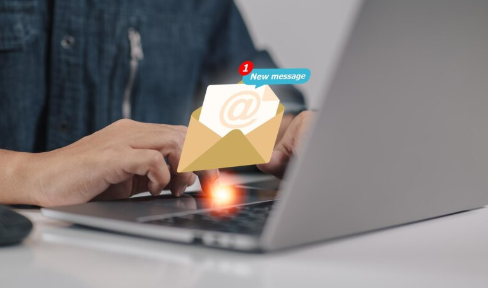Everyone thinks cold email doesn’t work—until it does. But what makes the difference between emails that get replies and those that never even see the inbox? It’s not about sending more emails or hiring more reps. It’s about sending smarter emails. Za-zu just released a handbook that explains exactly how to do this.
Most people approach cold email wrong because they’re optimizing for quantity. They blast out thousands of generic messages and hope for a few bites. But inboxes are smarter, prospects are busier, and generic emails get ignored.
Za-zu argues that the future of cold email isn’t more emails—it’s fewer, better-targeted messages powered by AI. Their approach relies on precise personalization, smarter deliverability strategies, and relentless analytics. Think of it as treating every email like a sales rep would if they had unlimited time and perfect memory.
One important tactic Za-zu covers is inbox rotation—spreading email sends across different addresses and IPs so no single inbox gets flagged as spammy. Another is AI-generated warm-up emails, subtly establishing domain credibility before sending high-stakes outreach.
But perhaps the most counterintuitive advice Za-zu gives is to rely on AI-driven personalization. This isn’t your basic mail merge. It’s analyzing public data to understand exactly what your prospects care about and crafting an email that genuinely resonates. The result? Dramatically higher reply rates.
Za-zu also emphasizes infrastructure. Deliverability isn’t luck—it’s engineering. Managing sender reputation, rotating IP addresses, and carefully pacing your sends makes a massive difference in whether your message hits the inbox or vanishes into spam.
The final piece is analytics. Cold emailing without rigorous analytics is like flying blind. Continuous measurement, adjustment, and experimentation ensure your tactics remain sharp even as the market shifts.
In short, cold emailing works when treated as a serious, technical discipline. It’s less about hustle and more about craft—less spam, more thoughtful conversations.
If you’re serious about growth without the inefficiencies of scaling your headcount, Za-zu’s handbook is probably required reading.
You can check out their full approach to smarter cold email here.
The shift from quantity to quality in cold email, as championed by Za-zu, fundamentally redefines the outreach landscape. It moves beyond the brute force tactics of yesteryear, which relied on sheer volume to compensate for low engagement. Instead, the focus is on a highly refined, almost surgical approach, where every email is meticulously crafted to maximize its impact. This paradigm shift is not merely about being polite; it’s about strategic efficiency, ensuring that resources – time, effort, and email infrastructure – are directed towards interactions that genuinely matter.
One of the most compelling aspects of Za-zu’s methodology is the emphasis on AI-driven personalization. This isn’t just a buzzword; it represents a profound capability to understand your prospect at an unprecedented level. Traditional personalization often stops at inserting a name or company. Za-zu’s AI delves deeper, analyzing public data, recent news, social media activity, and professional profiles to unearth genuine insights. For example, if a prospect has recently received funding, launched a new product, or commented on an industry trend, the AI can identify these triggers. This allows for an email that directly addresses their current challenges, recent successes, or stated interests, making the outreach feel less like a sales pitch and more like a relevant, timely conversation starter. This level of insight transforms a generic message into one that demonstrates genuine understanding and value, thereby dramatically increasing the likelihood of a reply. It’s the difference between a cold call and a targeted, well-researched proposal.
Beyond personalization, the Za-zu handbook meticulously details the often-overlooked art and science of deliverability. Many businesses invest heavily in content and strategy but neglect the technical backbone of their email campaigns. Deliverability is not a black box; it’s a series of interconnected systems and reputations. Za-zu’s approach involves active management of sender reputation, which is influenced by factors like bounce rates, spam complaints, and open rates. They advocate for sophisticated inbox rotation, using multiple email addresses and even varying IP addresses to distribute send volume and prevent any single account from being flagged by email service providers as suspicious. This meticulous engineering ensures that your carefully crafted emails actually land in the primary inbox, rather than being shunted to spam folders where they are never seen. Furthermore, their strategy incorporates AI-generated warm-up emails—automated, low-stakes interactions that organically build domain credibility over time, proving to email providers that your sending address is legitimate and active, not a temporary spam gateway.
The final, indispensable pillar of Za-zu’s framework is rigorous analytics. Without comprehensive data analysis, even the most brilliant cold email strategy is prone to stagnation. The market is dynamic, and what works today might be less effective tomorrow. Za-zu emphasizes continuous measurement of key metrics: open rates, reply rates, conversion rates, and even sentiment analysis of replies. This data-driven feedback loop allows for agile adjustments to subject lines, email body copy, calls to action, and even the targeting criteria for prospects. It’s an iterative process of hypothesis, experimentation, and optimization. This commitment to relentless analytics ensures that your cold email strategy remains sharp, adaptable, and consistently effective, turning cold outreach into a scalable, predictable revenue generation channel. In essence, Za-zu argues that cold email, when approached with the right blend of technology, strategic insight, and analytical rigor, isn’t just alive; it’s thriving as a powerful engine for business growth.







